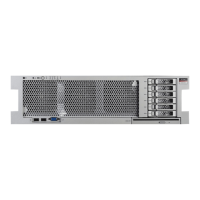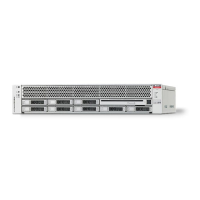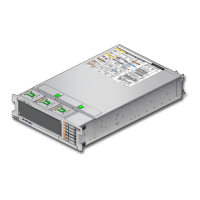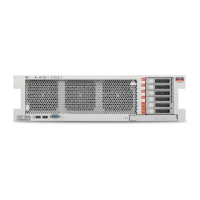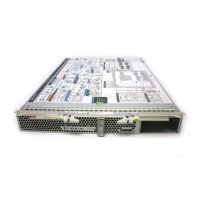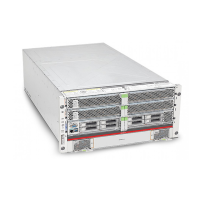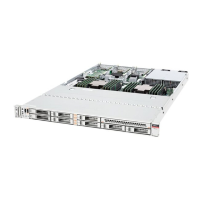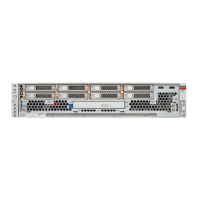DIMM Fault Handling
Servicing DIMMs 73
■
“DIMM Addresses” on page 70
■
“DIMM Configuration Errors” on page 84
DIMM Fault Handling
A variety of features play a role in how the memory subsystem is configured and how memory
faults are handled. Understanding the underlying features helps you identify and repair memory
problems.
The following server features manage memory faults:
■
POST – By default, POST runs when the server is powered on.
For CEs, POST forwards the error to the PSH daemon for error handling. If an
uncorrectable memory fault is detected, POST displays the fault with the device name of the
faulty DIMMs, and logs the fault. POST then disables the faulty DIMMs. Depending on the
memory configuration and the location of the faulty DIMM, POST disables half of physical
memory in the server, or half the physical memory and half the processor threads. When
this offlining process occurs in normal operation, you must replace the faulty DIMMs based
on the fault message and enable the disabled DIMMs with the Oracle ILOM command set
device requested_config_state=Enabled where device is the name of the DIMM being
enabled.
■
PSH technology – The Oracle PSH feature uses the Fault Manager daemon (fmd) to watch
for various kinds of faults. When a fault occurs, the fault is assigned a UUID and logged.
PSH reports the fault and suggests a replacement for the DIMMs associated with the fault.
If you suspect the server has a memory problem, run the Oracle ILOM show faulty command.
This command lists memory faults and identifies the DIMM modules associated with the fault.
Related Information
■
“POST Overview” on page 33
■
“DIMM Population Rules” on page 69
■
“DIMM Addresses” on page 70
■
“DIMM Configuration Errors” on page 84
Determine Which DIMM is Faulty (PSH)
The Oracle Fault Management tool fmadm faulty displays current server faults, including
DIMM failures.

